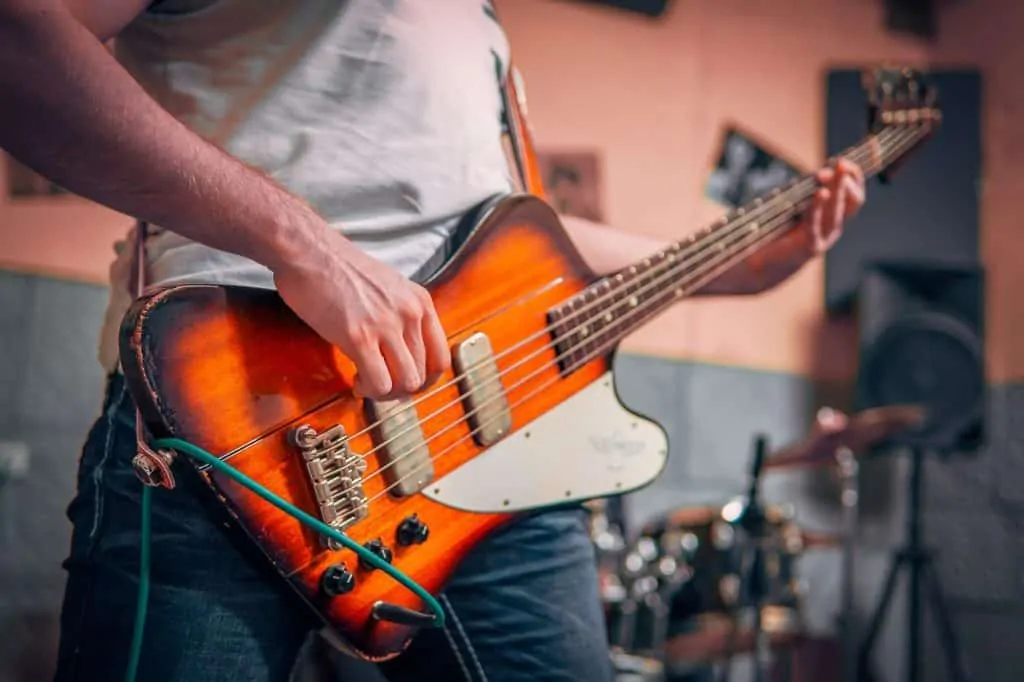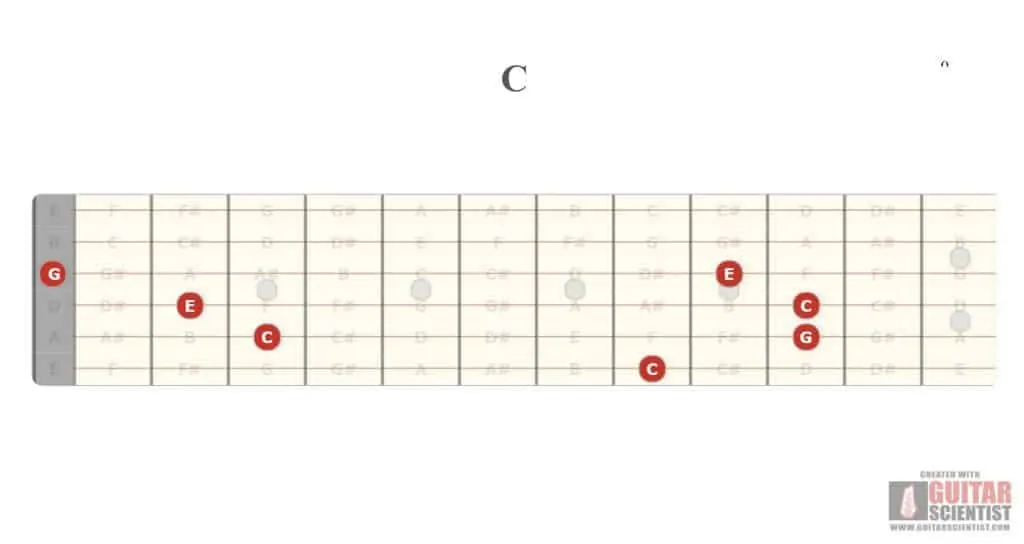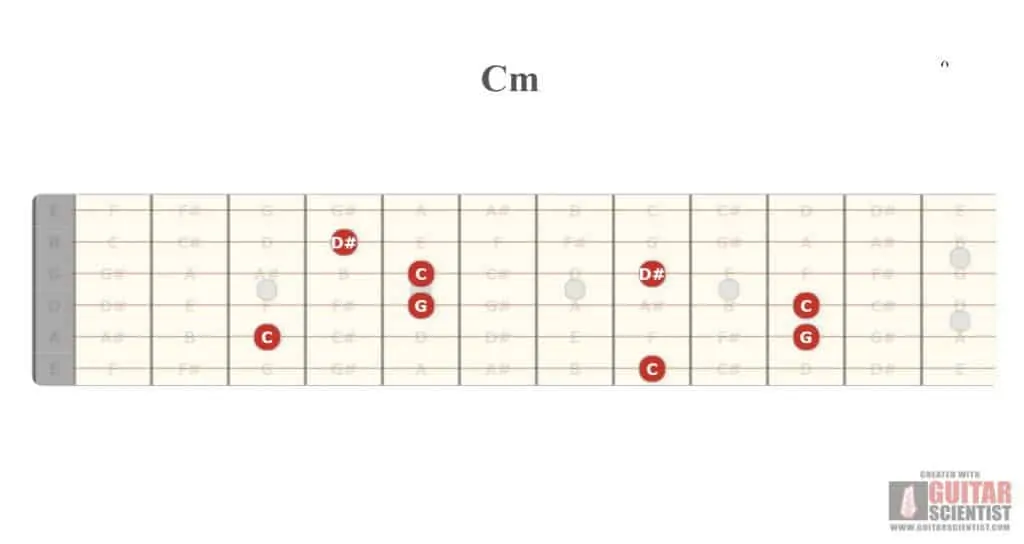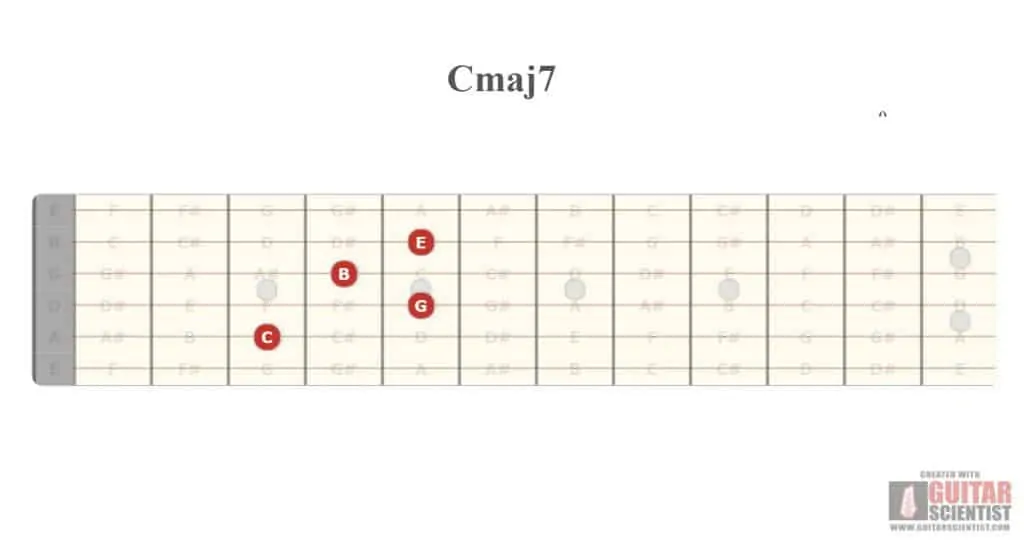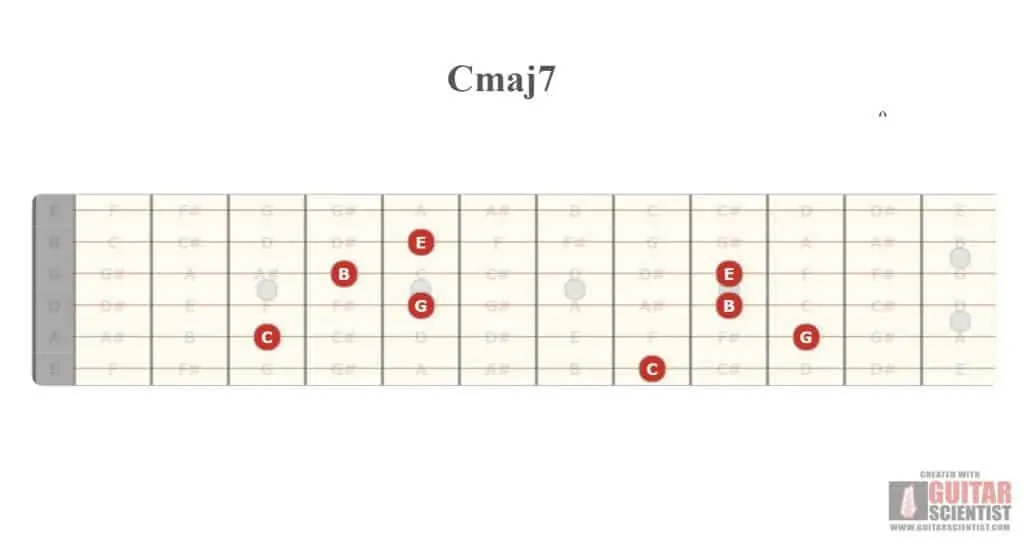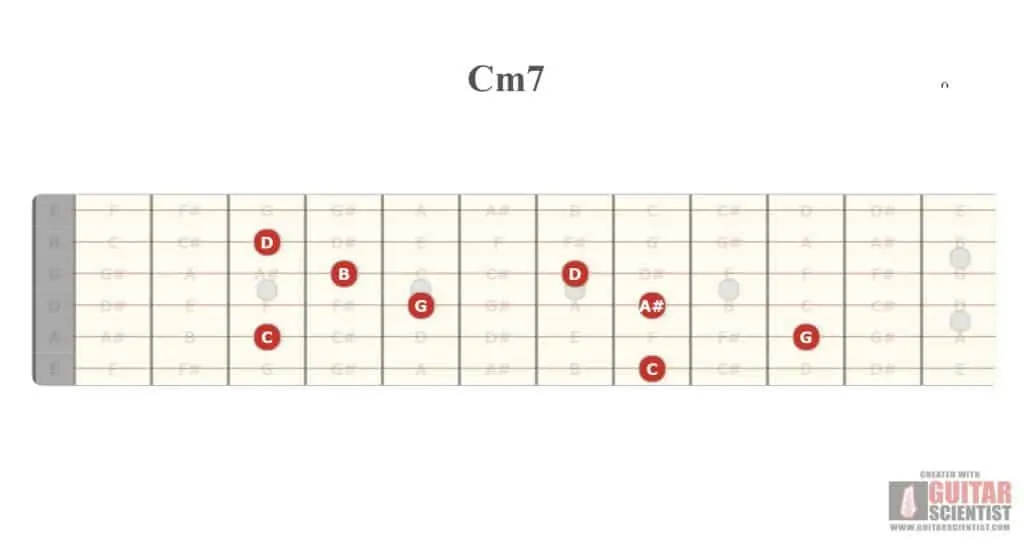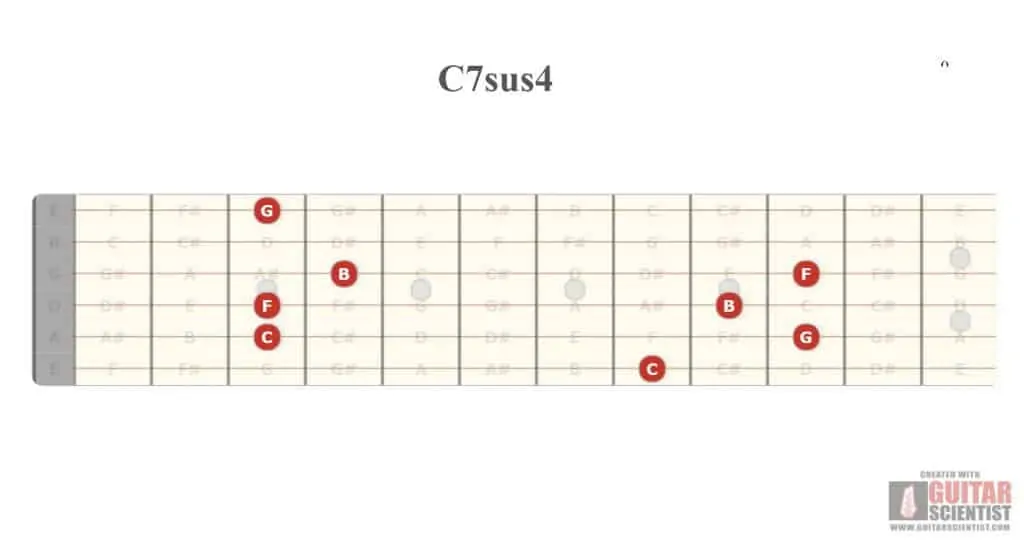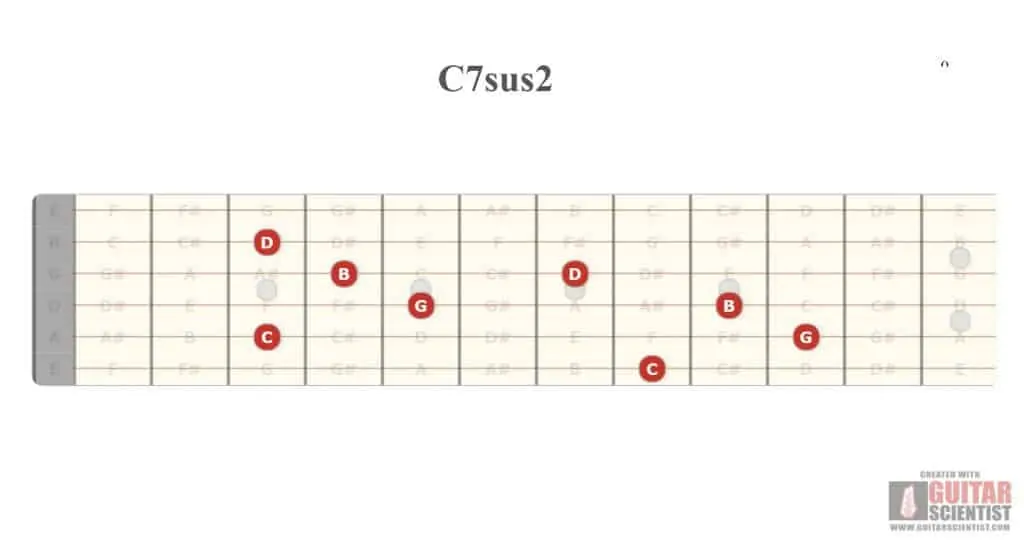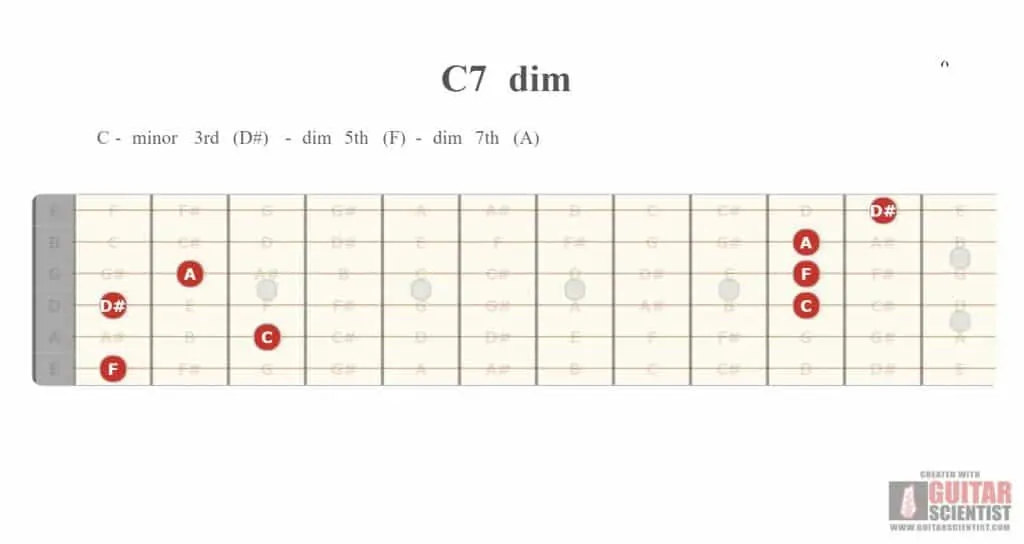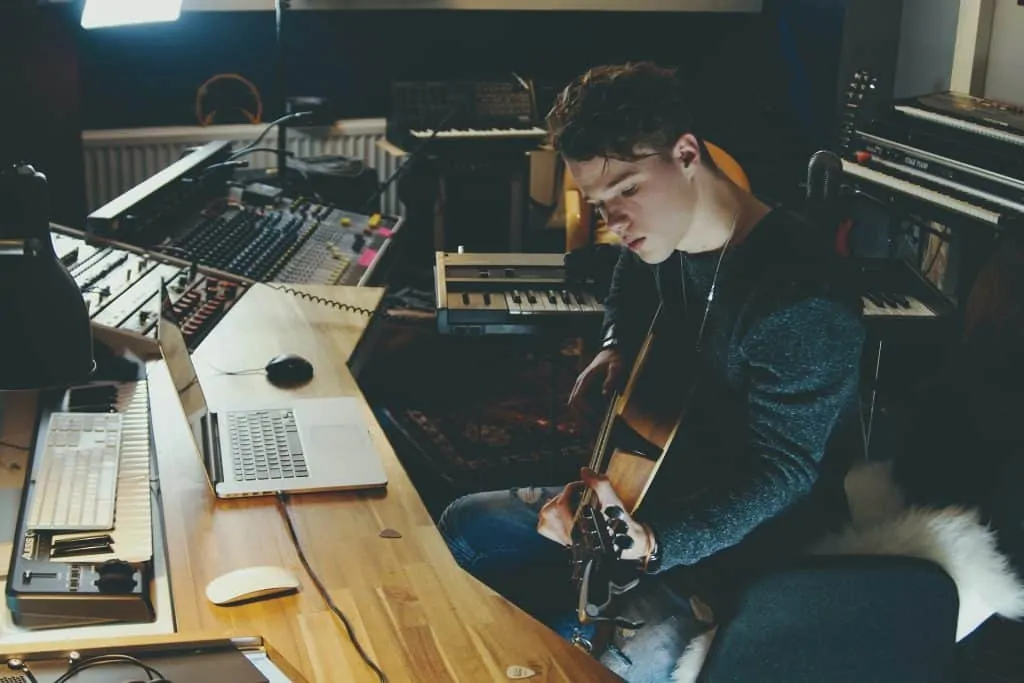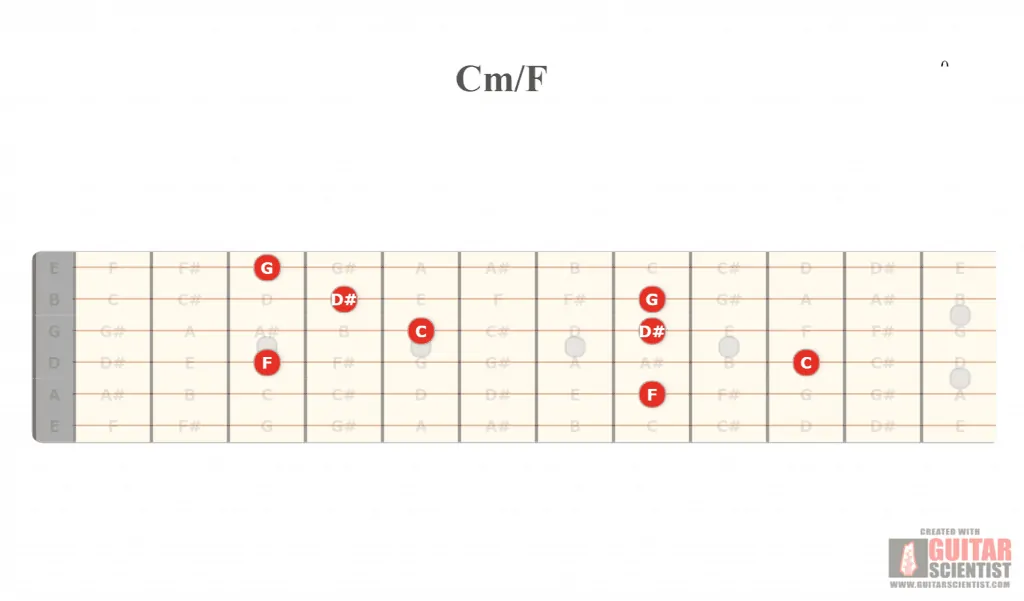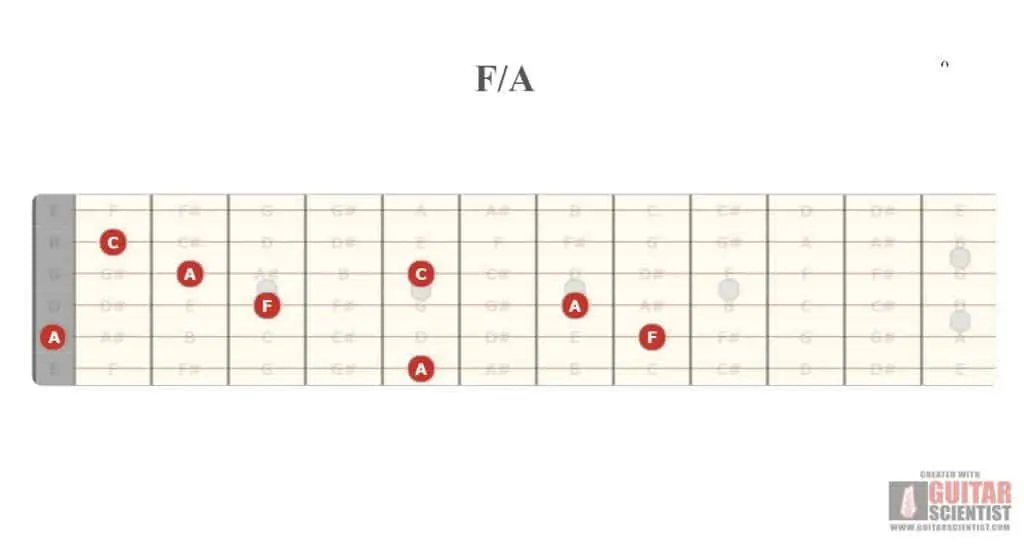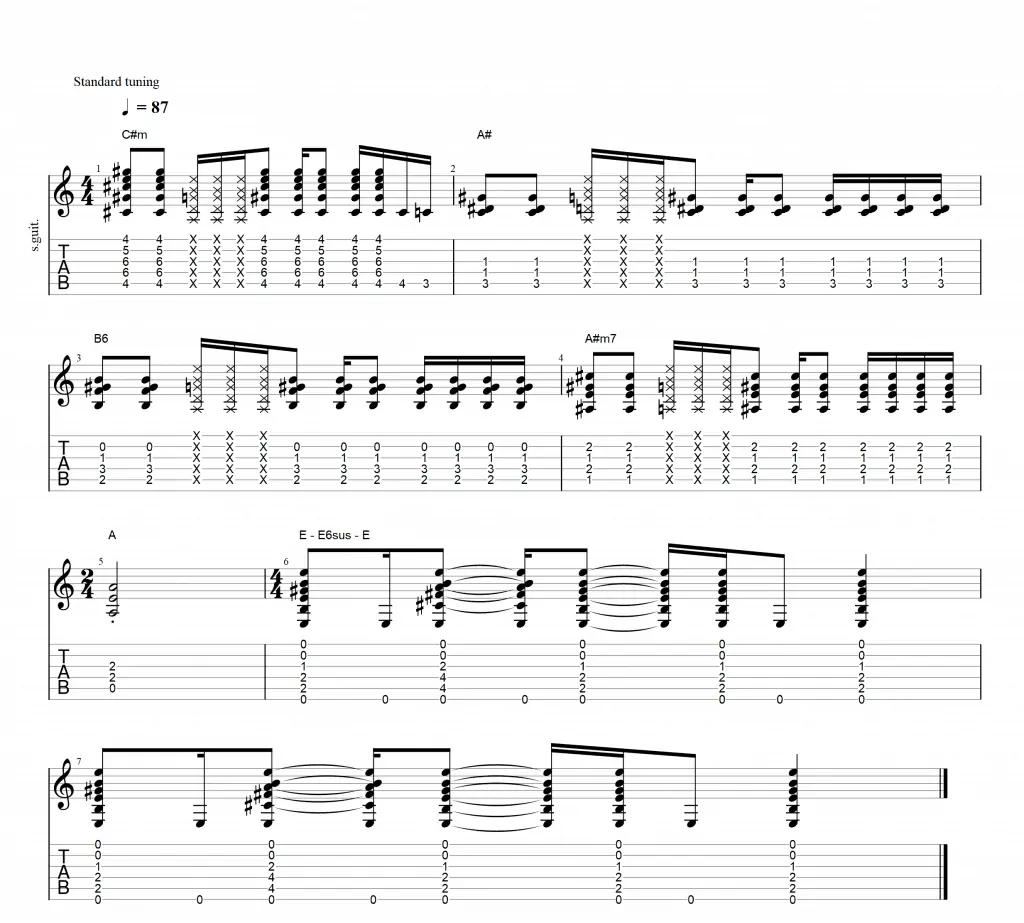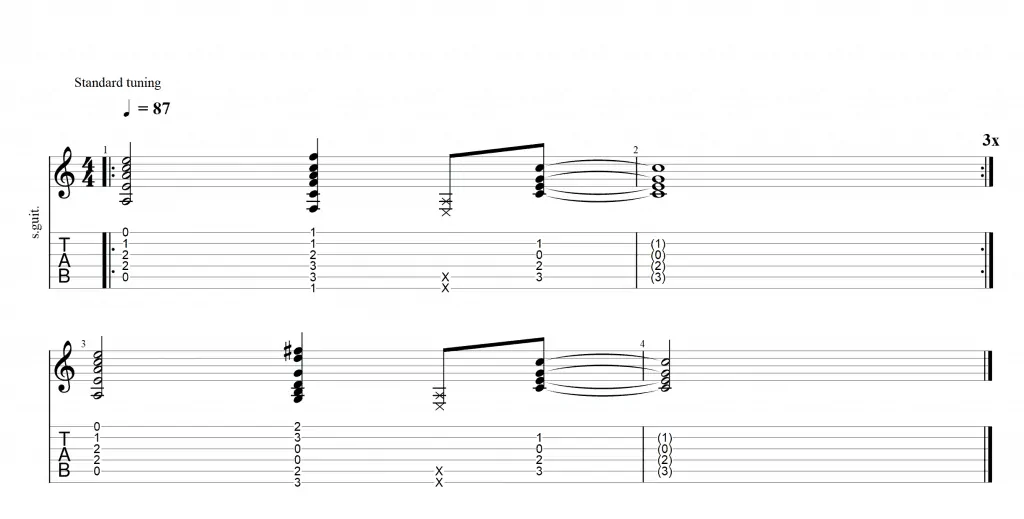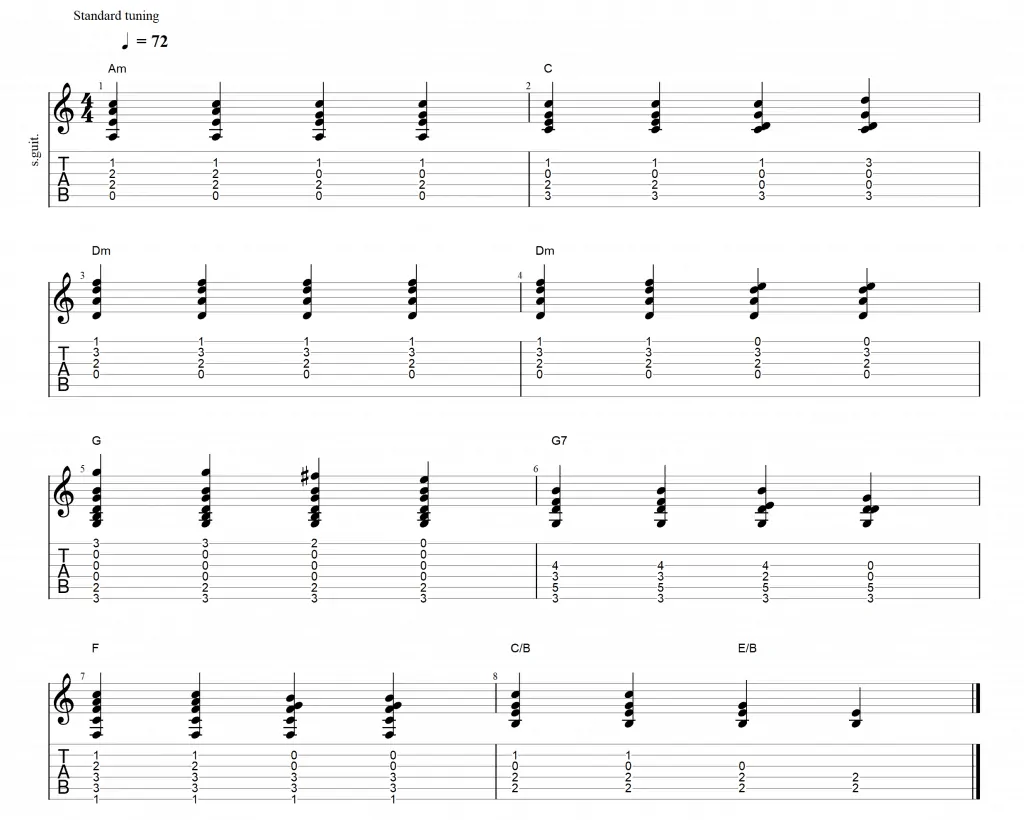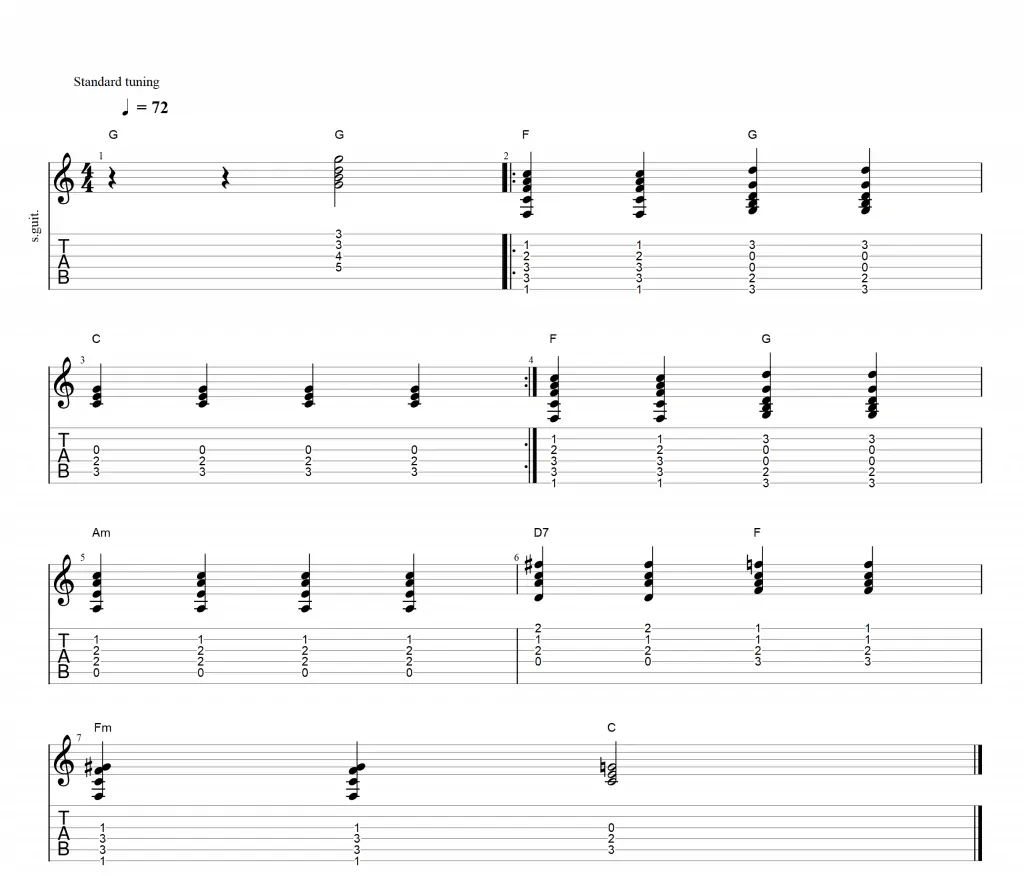Our heart connects with music first than our brain does, and also in deeper ways. That’s not some poetic saying, it’s not even pseudoscience. I’m talking about hardcore research.
See, the human heart is the most powerful creator and receptor of electromagnetic energy of the human body. And do you know what else produces electromagnetic energies? Emotions.
So whenever we hear a song played with “sad,” “happy,” “hopeful” chords or anything you can imagine, our brain receives that information as an emotion and thus changes how you perceive and understand this particular song.
Foreword: a sad chord is usually a minor chord, a 7th chord, or a “sus” chord.
Stay with me for a while. Let’s explore this music – hear a connection to understand how “sad chords” can guide us into particular feelings. Then, we’re going to see a bit of information about “sad chords” (what are they exactly?), and, finally, we’re listing the top 5 songs made with sad chords.
By the time we finish this guide, you’ll understand how to create sad songs yourself. What I’m trying to say is this is a guide for songwriters or aspiring songwriters. However, feel free to check the tabs and audios of the top 5 songs made with sad chords I listed down below. Have fun!

Keep your guitar nearby as I’m sharing guitar tabs and audios for exercises for this guitar lesson into emotional songwriting.
This guide is for beginner guitar players and composers alike.
Before we begin, though, why don’t you check by the comments below? Tell us what you want to learn from us, and we’ll help you with another guide!
Contents
How can music connect with us?
Music connects with us through the heart. The heart’s electromagnetic field is the most powerful rhythmic field produced by our bodies. It envelopes all of our cells and extends beyond our reach all around us.
Because of this powerful electromagnetic field, our heart understands music first than our brains. If this is too far fetched for you, it might help you can consider the heart as a second brain of the human body, which is a principle science has been pushing lately.
So, according to melodies and harmonies, you create with the chords and chord progressions, you can elicit strong negative or positive emotions.
And because an electromagnetic field means energy moving in rhythmic patterns, particular rhythms also affect your brain, and thus yourself, in different ways. In particular, songs that contain gradual volume increases (crescendos) create synchronized cardiovascular and respiratory responses in young people. It means your heartbeat will step up and step down with the music tempo.
Other than than, remember the heart rate goes up naturally whenever you breathe in, and goes down naturally whenever you breathe out.
Low-end frequencies travel further and faster than high-end frequencies, so the heart “hears” and “understands” the bass first than the rest of the song.
What is a “sad chord”?
A sad chord is how we understand “minor chords.” As I want to keep this simple, we’ll review sad chords as minor or minor pentatonic chords only. Although there can be other options, there’s no need to complicate it further.
The thing that makes chords sound sad is how they create tension. Such tension you can then release with major chords, which are more melodic and friendly.
Such tension is created by dissonance, which is the reason why it sounds sad. The dissonance often comes from the minor 5th or minor 3rd note.
We’ll see all of our examples in the C scale because it’s the easiest one.
Major chords
Traditionally, turning any song or chord to the minor key makes it sound sad. If you play any simple progression, like E-B-A but with minor chords, the feeling is totally different.
You can try this with any chord and see the results, although some minor chords are more pronounced as others (as Dm).
But, first of all, let’s see the major and minor C scales. I’m listing the step, which is the distance in frets you take from a one-degree note to the next one.
Major chords are not sad on their own, but you need to use them on your chord progressions in order to create some resolution, order, and stability into the song.
C Major:
| Note | Interval | Scale Degree | Steps |
| C | 1st / root note | Tonic, dominant | 2 |
| D | 2nd | Supertonic | 2 |
| E | 3rd | Mediant | 1 |
| F | 4th | Subdominant | 2 |
| G | 5th | Dominant | 2 |
| A | 6th | Submediant | 2 |
| B | 7th | Leading tone | 1 |
| C | 8th | Octave |
You build specific chords with specific combinations of notes that belong to a scale. A major chord is built of the major triad, which is the 1st, 3rd, and 5th-degree notes.
C major chord shapes.
Minor chords
Now, let’s take a look at the C minor scale:
| Note | Interval | Scale Degree | Steps |
| C | 1st / root note | Tonic, dominant | 2 |
| D | 2nd | Supertonic | 1 |
| Eb / | 3rd | Mediant | 2 |
| F | 4th | Subdominant | 2 |
| G | 5th | Dominant | 1 |
| A | 6th | Submediant | 2 |
| Bb | 7th | Leading tone | 2 |
| C | 8th | Octave |
Now, whereas a major chord is built with the major triad, a minor chord is build of the minor triad.
A C minor chord would be C – Eb /D# – G.
C minor chord shapes.
Major chords create stability, order, and resolution; minor chords, on the other hand, create instability, tension, and disorder. You must keep in mind the balance between tension & resolution as you create your own songs.
There’re other chords that can also sound “sad” which are also derived from the major or minor scales.
Let’s see…
Major 7th chords
Major 7th chords include the major chord plus the 7th note
C major 7th chord on the 5th string.
See, the root note is on the 5th string. It means that if you transpose this fingering, for example, two frets up, you’d get a Dmaj7. I hope that gives you the idea.
Let’s see the same chord on the 6th string.
C major 7th chord on the 6th string.
Similarly, if you transpose this figure on the 6th string two frets down, for example, you’d get an Amaj7.
The sound 7th chords achieve is often “cool” and “jazzy.
Dominant 7th chords
Dominant 7 chords are haunting, mysterious. Remembering their formula can be tricky, though, so it’s easier to remember the chords shapes.
Either way, a dominant 7th is made of the major triad plus the minor 7th interval.
The 7th interval of the C minor scale is Bb / A#, so C7 chord shapes look like this:
C dominant 7 chord shapes.
I gave you the chord shape on the 5th and 6th string. Similarly, you can transpose it to get the different chords you want.
Minor 7th chords
The sound of minor 7th chords is emotional. I describe it as “hidden hope,” so these ones can definitely add some power to your arsenal.
You can build minor 7th chords with the minor triad plus the 7th chord.
Cm7 chord shapes would look like this:
C minor 7 chord shapes.
Remember you can transpose these figures to get different chords.
7Sus chords
“Sus” means “suspended,” so no wonder “sus” chords create a mysterious atmosphere.
You can create “sus” chords by omitting the 3rd note and replacing it for either the 2nd note (“sus2”) or 4th note (“sus4”).
Then, you can turn that note into a 7th by adding the 7th note:
So, a C7sus4 looks like this:
C7 suspended 4th chord shapes. Feel free to transpose it. Remember you must mute one of the strings for these chord shapes.
And C7sus2 would look like this:
C7 suspended 2nd chord shapes. You can transpose these chord shapes to get different chords.
Let’s go on…
Diminished chords (dim)
Finally, let’s review diminished chords (“dim”), as their sound is naturally weaker than major chords. Ther tone is tense, dark, and unstable. They are the most dissonant chords you can play. Without any context, they are very off-putting.
A diminished short contains the minor 3rd (which is three frets above the root) and a diminished 5th (six frets above the root).
Here’s how a Cdim would look like, then:
Diminished C chord shapes. Feel free to transpose this figure to get different chords.
Now, you can create a diminished 7th chord by adding the diminished 7th, which is 9 frets above the root:
Diminished C7 chord shapes. Feel free to transpose this figure to get different chords.
A popular use of diminished chords is a bridge between two chords for they create a lot of tension. Then, you can release tension with a more “stable” chord.
Additionally, dim chords create step-like motion in the root notes of the chord, which has a powerful sense of movement. Here’s how to use these chords.
- Build your tonic chord (known as “I” according to jazz notations);
- Follow with a diminished chord or a diminished 7th, just a half step above your chord (called “bii” in jazz notation);
- Finish with a minor chord another half step above the chord.
Here’s a song using diminished chords:
<iframe width=”560″ height=”315″ src=”https://www.youtube.com/embed/SP9wms6oEMo” frameborder=”0″ allow=”accelerometer; autoplay; encrypted-media; gyroscope; picture-in-picture” allowfullscreen></iframe>
Emotional intelligence
Building a song with sad chords is a matter of using an emotional, sad, chord progression. Now, I’m not saying the only way to a songwriter is by using known chord progressions, this is the only a tool to enhance your creativity.
The progressions I’m sharing are a great start, but you’ll need to present them in compelling ways to connect with listeners. Instrumentation, storytelling and music production goes a long way to distinguish a good song from a bad song.
Keep in mind there’s no perfect formula for emotional, sad, or impactful music. It’s a matter of emotional intelligence and musical experimentation.
My advice for your emotional songwriting is not about creating either the music or the lyrics first. What you need to do is create the intention first:
- What’s the primary feeling of the song?
- Will you resolve that feeling?
- Is there something you want to say?
- How do you want your listeners to feel?
If your lyrics and your instrumentation connects, you will also connect with the audience.
With that said…
Emotional chord progressions
As you’ve seen, music plays a role in our lives and directly affects our emotions, heartbeat, breathing rate, and more.
The best way to connect with the listeners, as musicians now, is through the human level. What do you want to tell with your song? What’s the story? Once you know this, then you need to choose chords and chord progressions that are emotionally rich and similar to your intended purpose.
A chord progression is an order in which you’ll be playing the chords of any given scale. These can help you be more honest and provoke the right emotions on listeners.
As many people describe it, chord progressions are the building blocks of music. Most of them came out of the jazz genre.
I’m giving you sad, emotional chord progressions we’ll later see on the top 5 songs made with sad chords.
If you need some extra insight, you can check this guide about basic theory knowledge.
I advise you to practice each of the chords progressions I’m giving you, at least once.
What you need to understand is how a chord relates to another according to how it progressed. Let me explain:
- The chord progression is written in romantic numbers. Each number (I – II – III – IV – V – VI – VII) represents a note interval.
- When there’s a chord change, it produces an immediate melody and an immediate feeling according to the interval, in relationship of course to the root note. So, for example, if the first note is I and the second note is V, you already have a mostly happy melody.
- Even when the audience doesn’t “know” the root note, they can feel and know it unconsciously just as the song starts. You can know it as well simply by humming through the song: the one-note you can hum during the whole song that always sounds on the tune is the root note.
- You should always write songs whilst having the root note in mind.
Songwriters just always keep the root note and the scale in mind. If not, they risk making their song offtune.
You can find the root note by finding the one note that sounds on tune during the whole song. You can do it by humming or with a piano (preferibly) or an acoustic guitar.
Progression, cadences, and phrases
Before we go through, I needed to make a quick explanation of how chords progress or change within a song.
See, whenever there’s a chord change, there’s a chord progression. And whenever a bar ends and another one starts, there’s also a chord progression. That means a chord progression can be within a bar or within a set number of bars that repeat in a phrase.
A musical phrase is a set number of bars that follow a rhythmic and melodic pattern and repeats itself until the song goes to another section; or until the song grows intensity or loses intensity.
A cadence is like a musical punctuation that separates one phrase to the next. That means a cadence can be a slight change in the last bar of a compass, like, for instance, a different chord. It doesn’t matter what it is as long as it marks the end of a section and the start of another (like the last part of a chorus just before another verse).
Epic feelings (V – IV)
These epic chord progressions reflect the hero’s journey. Is the growth from zero to power, or the fall from power to zero. Is the realization of something of power, something intense growing inside.
It’s a progression that helps you build emotional intensity up to eleven. It’s the active ingredient of many hit tracks, and for a good reason.
Let’s keep the examples in the C scale. I’m sharing these examples with Roman numbers as that’s the right way to do it. Either way, remember these numbers represent the interval.
| I | V | VI | IV |
| C | G | B | F |
Typically, the chords of this progression are all major.
A great example of this progression is The Cure’s A Letter to Elise, although this is a famous progression present in many musical genres.
<iframe width=”560″ height=”315″ src=”https://www.youtube.com/embed/-AUCSkHCrwY” frameborder=”0″ allow=”accelerometer; autoplay; encrypted-media; gyroscope; picture-in-picture” allowfullscreen></iframe>
You can amp the epicness with the Pachelbel’s Canon, a canon produced by German composer Johann Pachelbel that serves as a great inspiration for modern music. We also know this canon as “Canon in D” or “the wedding song.”
<iframe width=”560″ height=”315″ src=”https://www.youtube.com/embed/Ptk_1Dc2iPY” frameborder=”0″ allow=”accelerometer; autoplay; encrypted-media; gyroscope; picture-in-picture” allowfullscreen></iframe>
It’s beautiful, it’s epic, and it’s also sad.
The Canon in D is two major chords plus two minor chords). The basic chord progression looks like this:
| I (1st bar) | V | VI | III |
| C major | G major | B minor | E minor |
| IV (5th bar) | I | IV | V |
| C | G | B | E |
Here’s a great example: Don’t Look back in Anger by Oasis:
<iframe width=”560″ height=”315″ src=”https://www.youtube.com/embed/r8OipmKFDeM” frameborder=”0″ allow=”accelerometer; autoplay; encrypted-media; gyroscope; picture-in-picture” allowfullscreen></iframe>
In summary, whenever you follow the 5th-degree chord with the 4th or the 6th, you always get an epic feeling. You can heighten the sensation when you add the root note.
Sad feelings (VI – IV)
Sadness, failure, and defeat are unavoidable parts of our lives. And because sad songs represent honest human emotions, we have a lot of great sad music.
There are a few emotional chord progressions that sound sad right away.
The first one comes from ‘50s music:
| I | VI | IV | V |
| C | Am | F | G |
Typically, the second chord is minor, whereas the other chords are either major, dominant 7th, or sus chords.
Here’s another classic sad chord progression inspired by jazz and bee-bop genres:
| I | I | IV | VI |
| C | Cm | F | A |
Or:
| I | I | VI | IV |
| C | Cm | A | F |
There’s a common pattern of making the second chord minor.
You can improve this progression by adding an additional note to two of the chords:
| I | I (4) | IV (6) | VI |
| C | Cm/F | F/A | A |
The “/” notation is there to replace one note for another. So, for example, a Cm/F would replace the C for the F like this:
Cm/F chord shapes. You can transpose this, for example, two frets up, and get a Dm/G.
And so the F/A would be:
F/A chord shapes. You can transpose this, for example, two frets up, G/C.
Let me give you a tab and audio example:
Sad chord progression example.
So, to make things clearer, any chord progression based on the 1st, 4th, and 6th-degree notes is a “sad progression” (I – IV – VI).
The blues progression (I – IV – V)
This is the “blues progression” as it comes right from the blues formula, the 12-bar blues. However, in order to make it emotional without the whole “12 bars,” the blues genre has to convey its fiery messages, we need to play this on minor scales.
Thus, we’re working with the C minor scale now (C – D – EB – F – G – A – Bb – C), as well as minor chords only.
The “blues progression” is simply any kind of chord progression build around the I, V, and IV degree notes.
| I | IV | V | I |
| Cm | Fm | Gm | C |
A quick tip: If you make the last chord major you create a sense of resolution on the song. Use it wisely.
| I | IV | V | V |
| Cm | Fm | Gm | G |
You can also resolve the tension with the major 5th note, which is also a dominant note. You can resolve the tension when you enter a new section of the song, like the chorus.
Lastly, you can play this progression like this:
| I | I | IV | V |
| Cm | Cm | Gm | Gm |
Here’s a cheat sheet of how the I IV V progression works in every minor scale:
- Cm: Cm – Fm – Gm
- C#m: C#m – F#M – G#M
- Dm: Dm – Gm – Am
- Eb: Ebm – Abm – Bbm
- Em: Em – Am – Bm
- Fm: Fm – Bbm – Cm
- F#m: F♯m – Bm – C♯m
- Gm: Gm – Cm – Dm
- Abm: Abm – Dbm – Ebm
- Am: Am – Dm – Em
- A#m: Bbm – Ebm – Fm
- Bm: Bm – Em – F♯m
Playing a chord progression with only minor chords can be a bit offputing, so try balancing it out with other alternatives, as 7th chords, major, or sus chords.
Bleak and dispair feelings (I – II)
I find the next progression is the darkest one when you play it only on minor chords.
Here it is:
| I | II dim | V | I |
| Cm | Ddim | G | Cm |
Just like other progressions, the II chord and the V chord work together again.
Here is another audio and tab example. This time, though, I’m going to play the Gm and the Cm, and then I’m releasing all of this tension with a final Cmaj.
An example of a sad chord progression using diminished chords.
In summary, following the root note with the 2nd-degree chord has a tendency to sound very dark.
Romance and loss feelings (I – VI)
Lastly, I’m sharing this chord progression that’s very common in ballads talking about love, lost, love lost, love found, and redemption.
The trick here is that only the first chord is major, whereas the other three are major.
| I | VI | III | VII |
| Cm | A | Eb | Bb |
This progression is very particular as most chord progressions omit the 6th and 7th-degree notes.
So, although you’re not using minor chords, you’re using the minor scale, and thus the final melody is sad. It’s much sadder than playing this on a major scale, for example.
In summary, the 7th chord has a tendency to sound very romantic and sad at the same time. More so, following the 1st chord with the 6th chords talks about loss.
If you want more info about minor chord progressions, you can check this guide.
Voicings and sounds
Here are my final tips on sad chord progressions Listen, sad is a dark, simple feeling, which means it thrives on two things: low-frequencies and simple sounds.
That means you need to play your chords on the lower end of the fingerboard. An Am7 on the 12th fret is not as unhappy as the same chord with played with open strings.
Additionally, don’t make the chords, the chord changes or the progressions too complex, because that will be too much for listeners to digest.
I must also add that not-complex chords means playing on slow tempos, usually between 70 and 120 bpm; as well as using the standard 4/4 time signature.
In summary
As you see, you don’t have to play all “sad chords” to make a sad song. Instead, choosing the right chord progression is way more important as these can easily convey the emotions you want and in much faster ways than playing around blind with minor chords.
So, oftentimes, combining the right major and minor chords can create emotion. Search your heart for what you want to tell, and play around the tools I gave you until the sound is honest and real.
In the end, minor scales are harmonically richer than major scales because minor key songs frequently go back and forth major and minor chords. Often times, the same chord can appear minor and major in the same song.
<iframe width=”560″ height=”315″ src=”https://www.youtube.com/embed/_AeYfXEKSJI” frameborder=”0″ allow=”accelerometer; autoplay; encrypted-media; gyroscope; picture-in-picture” allowfullscreen></iframe>
Top 5 songs made with sad chords tabs
Lets now review 5 popular songs made with sad chords. I’m going to share the tabs and audios so you can play along.
We’ll review the scales, the tabs, and the chord progressions of these songs. I hope these great examples help you understand how to create emotional songs.
-
The Scientist – Coldplay
<iframe width=”560″ height=”315″ src=”https://www.youtube.com/embed/RB-RcX5DS5A” frameborder=”0″ allow=”accelerometer; autoplay; encrypted-media; gyroscope; picture-in-picture” allowfullscreen></iframe>
The Scientist by Coldplay is Coldplay’s second single of their second studio album, A Rush of Blood to the Head.
This is a ballad made with piano chords, whereas the guitar first enters during the first bridge and goes along the chorus and the rest of the song.
The scale of the song is Fmaj.
Fmaj:
| Note | Interval | Scale Degree | Steps |
| F | 1st / root note | Tonic, dominant | 2 |
| G | 2nd | Supertonic | 2 |
| A | 3rd | Mediant | 1 |
| A# | 4th | Subdominant | 2 |
| C | 5th | Dominant | 2 |
| D | 6th | Submediant | 2 |
| E | 7th | Leading tone | 1 |
| F | 8th | Octave |
The chord progression, for the verse, goes like this:
| VI | IV | I | I |
| Dm | A#maj | Fmaj | Fsus2 |
This sounds like a variation of the “sad feelings” chord progression.
Here’s the tab:
The Scientist (Coldplay) verses.
Let’s take a look at the chorus, which has the following chord progression:
| IV | IV | I | I |
| A#maj | A#maj | Fmaj | Fsus2 |
Easy, simple. And although it’s built on mostly major chords, it’s mostly a variation of the ‘50s sad chord progression.
Here’s the tab, if you’re in doubt:
The Scientist (Coldplay) chorus.
Quick tip for you we can learn from this song: you don’t have to star the sections with the root note. Often times, starting with the root note is boring and predictable.
Lastly, this song is easy, simple, and even predictable, so we didn’t even need to discuss phrases and cadences.
-
Interstate Love Song – Stone Temple Pilots
<iframe width=”560″ height=”315″ src=”https://www.youtube.com/embed/yjJL9DGU7Gg” frameborder=”0″ allow=”accelerometer; autoplay; encrypted-media; gyroscope; picture-in-picture” allowfullscreen></iframe>
Let me be honest with you: Stone Temple Pilots is my favorite band ever. And I think this is a perfect song for how the sound surrounds you, and how everything harmonizes in a powerful, melodic, and sad message.
This particular song is almost a country ballad. It debuted on their 1994 Purple album and became one of the most beloved hits of the ‘90s decade.
It’s a very harmonious and tight song written on the key of C#maj.
C#m:
| Note | Interval | Scale Degree | Steps |
| C# | 1st / root note | Tonic, dominant | 2 |
| D# | 2nd | Supertonic | 2 |
| E | 3rd | Mediant | 1 |
| F# | 4th | Subdominant | 2 |
| G# | 5th | Dominant | 2 |
| A | 6th | Submediant | 2 |
| B | 7th | Leading tone | 1 |
| C# | 8th | Octave |
The phrase of the chorus goes along for 5 bars. It goes like this:
| I | V | VII | VI | VI |
| C#m | G# | B6 | A#m7 | A |
Let’s realize how it started as a blues progression, but then it adds the 7th chord for the loss feeling, for the lyrics talk about the pain of being lied.
It’s also similar to the The Canon in D chord progression, which goes I – V – VI – VI.
There’s also a small bridge at the end of each phrase, which is known as the post-verse and goes for two bars with the following chord progression:
| III | III |
| E – E6sus – E | E – E6sus – E |
Let’s see the tab. Keep in mind there’s a cadence on the 5th bar of the verse. The cadence changes the time signature for one bar only, so instead of a 4/4 by have a shorter 2/4 tempo.
Interstate Love Song verse and post-verse.
Let’s take a look at the chorus now and see if it has a more conventional structure. More so, you can play some of the chords as power chords, which is simply the root note and the 5th note on either the 6th or 5th string.
The chorus has a phrase that goes for 10 bars, and there’s a cadence on the 10th. The progression goes like this:
| I (1st bar) | III | VI | V | VI |
| C#5 | E5 | A | G# | A |
| III (6th bar) | VI | V | VI | III |
| E5 | A | G# | A | E |
Here’s the tab:
Interstate Love Song chorus.
I find this as a variation of the Canon in D progression. The chorus also gives you an epic feeling of resolution, resolution from the sadness of the verses, by combining the 5th chord with the the 6th.
-
Someone Like You – Adele
<iframe width=”560″ height=”315″ src=”https://www.youtube.com/embed/hLQl3WQQoQ0″ frameborder=”0″ allow=”accelerometer; autoplay; encrypted-media; gyroscope; picture-in-picture” allowfullscreen></iframe>
Rumor has it Adele only composes a song whenever she’s going through a hard time with her partners. And that includes a breakup.
So, the massive hit Someone Like You is part of her second studio album, 21. It debuted in September 2011. Just by the over billion plays, it has on YouTube you can realize how big this single is.
Adele sings this song only with a piano. However,r I’m sharing a beginner’s guitar tab so it’s easier for us to study the chords. Maybe that can give you an idea to create another tune.
The scale of the song is A#maj.
Amaj:
| Note | Interval | Scale Degree | Steps |
| A | 1st / root note | Tonic, dominant | 2 |
| B | 2nd | Supertonic | 2 |
| C# | 3rd | Mediant | 1 |
| D | 4th | Subdominant | 2 |
| E | 5th | Dominant | 2 |
| F# | 6th | Submediant | 2 |
| G# | 7th | Leading tone | 1 |
| A | 8th | Octave |
Basically, this song has two sections, the verse and the chorus (much like all pop songs).
The chord progression goes like this:
| I | I (4) | VI (6) | IV |
| A | A/D | D/F# | F# |
As you see, this follows the structure of the sad feelings progression.
Then, the chorus goes like this:
| I | V | VI | IV |
| A | E | F#m | D |
It looks like a standard blues progression with the addition of the sad 6th-degree note.
Instead of sharing the tabs for this song, I’m going to share a video tutorial I feel can truly help you. Keep in mind you need a capo, which is also why I choose not to do a tab (it can get really confusing).
<iframe width=”560″ height=”315″ src=”https://www.youtube.com/embed/5ZsG9zrhtZc” frameborder=”0″ allow=”accelerometer; autoplay; encrypted-media; gyroscope; picture-in-picture” allowfullscreen></iframe>
-
Stay With Me – Sam Smith
<iframe width=”560″ height=”315″ src=”https://www.youtube.com/embed/pB-5XG-DbAA” frameborder=”0″ allow=”accelerometer; autoplay; encrypted-media; gyroscope; picture-in-picture” allowfullscreen></iframe>
Sam Smith began his career after a hard breakup. He earned his first grammy for his first album, The Lonely Hour (2014), and famously thanked his ex-partner for the inspiration.
Stay With Me is part of this heartbreak-filled album, so it’s definitely sad, honest, and emotional.
The song is built on A minor, which is related to the C major scale because it’s the same notes.
Am:
| Note | Interval | Scale Degree | Steps |
| A | 1st / root note | Tonic, dominant | 2 |
| B | 2nd | Supertonic | 2 |
| C | 3rd | Mediant | 1 |
| D | 4th | Subdominant | 2 |
| E | 5th | Dominant | 2 |
| F | 6th | Submediant | 2 |
| G | 7th | Leading tone | 1 |
| A | 8th | Octave |
It has two sections, the verses, and the chorus. However, the instrumentation of the song (which is just a piano) stays the same during the whole song.
Let’s break down the chord progression of the song:
| I – VI – III | I – VI – III | I – VI – III | I – VII – III |
| Am7 – F – C | Am7 – F – C | Am7 – F – C | Am7 – G7sus4 – C |
This is a romantic song that, not surprisingly, follows the “romantic feelings” chord progression closely.
Although this is a piano song, I’m sharing the guitar tab. The guitar plays the same during the whole song.
Stay with me Verse Tab and Audio
What can we learn from this? Sometimes easy is succesfoul. Sam Smith managed to create a simple, sad melody that went perfectly along with what he intended to say. For that, he used and already discovered emotional chord progression.
Lets go on…
-
When I Was Your Man – Bruno Mars
<iframe width=”560″ height=”315″ src=”https://www.youtube.com/embed/ekzHIouo8Q4″ frameborder=”0″ allow=”accelerometer; autoplay; encrypted-media; gyroscope; picture-in-picture” allowfullscreen></iframe>
Some (I) would say Bruno Mars is a modern Michael Jackson. And, in particular, I love this song.
This is the third single of Mars’ second studio album, Unorthodox Jukebox (2012). There’s a particular thing not many people know about this song, which is a former rock and punk star Avril Lavigne is one of the composers of the song.
This is also a piano song, but we’re studying the chords nevertheless. I’m also sharing an easy tab for you to play and sing along.
The scale of the tune is Cmaj.
Cmaj:
| Note | Interval | Scale Degree | Steps |
| C | 1st / root note | Tonic, dominant | 2 |
| D | 2nd | Supertonic | 2 |
| E | 3rd | Mediant | 1 |
| F | 4th | Subdominant | 2 |
| G | 5th | Dominant | 2 |
| A | 6th | Submediant | 2 |
| B | 7th | Leading tone | 1 |
| C | 8th | Octave |
Let’s review the verse section and study its building blocks. We’ll see a phrase that goes for 4 bars, whilst the cadence before the chours goes through the 5th bar.
| VI (1st bar) | I | II | II |
| Am | C | Dm | Dm |
| V (5th bar) | V | VI | I (VII) |
| G | G7 | F | C/B |
See how creative this chord progression for this beautiful song is? It doesn’t follow any of the patterns I gave you above. However, it has some elements of sad feelings and romantic feelings.
Let’s review the guitar tabs:
When I Was Your Man verse guitar tab.
The chorus has a phrase that goes for 4 bars, whereas the cadence, which serves as the end of the chorus, goes for 4 bars.
| IV – V (6 st bar) | VI | II – IV | IV – I |
| F – G | Am | D7 – F | C |
As you see, the first part of the chorus follows the blues progression. However, the second part doesn’t follow any particular progression, albeit all of the chords are part of the scale.
Here’s the tab:
When I Was your Man chorus.
We found how this hit song is very creative on its progression as it does not follow other popular or overused formulas. However, it does fall into a more standard progression on the first part of the chorus. What can we learn from that? Well, if you want to create a truly catchy chorus you can certainly use the certified-fresh blues progression.
Final Considerations
How to create emotional songs?
After reviewing chords, chord progressions, and sad & emotional songs, we found out various patterns:
- Popular sad songs are built on major and minor chords mostly.
- The time signature is always 4/4. As sadness is a complex emotion, making the song more difficult to understand with non-standard time signatures might hurt the storytelling.
- The note degrees that traditionally sadder are the 4th ad the 6th. Any song built around the 4th and the 6th chords convey sad emotions.
- You can turn any happy, cool, and pop chord progression (like any progression built around the I, IV, and V chords) and play it with minor chords and the minor scale, and convey sad emotions as well.
- Musical figures are also very simple. Songwriters intending to create a hit will mostly use crotches and semi-crotches.
- The speed of the song rarely goes over 120 beats per minute.
- Major and minor chords work well together. Just keep in mind how consonant chords create stability, order, and resolution; dissonant chords create tension, instability, and disorder.
- Consonant chords include major chords, dominant 7th, major 7th.
- Dissonant chords include minor chords, minor 7th, diminished.
- Suspended chords fall right in between consonant and dissonant.
- You can mix and match almost any kind of chord with each other as long as you keep in mind the consonant vs dissonant issue. Also, you must keep within a logical scale.
- You can happily use different variations of the same chord to create a cadence. Or you can create a whole new progression for the last bars of the phrase in order to create your cadence.
- Although we didn’t discuss this during the article, the lyrics are also very important. Even when the music goes straight to the heart, the lyrics go through the brain. Connect both elements and you’ll get a loyal fan.
- Lastly, you don’t have to start the song, the verses, the chorus, or any section on the root note. The root note is always there, either way.
In the end, it’s all up to you. If you want to create hits, keep it simple, keep it formulaic, and tell a story that connects with the lyrics.
Or, if you’re not looking to create a hit, you can experiment with everything I said and create something that feels honest and real for you.
What are your thoughts? What’s your favorite sad song and how would you approach creating your own emotional tune? Leave your comments down below!

